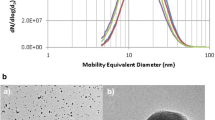Abstract.
Based on observations that the persistent environmental pollutant hexachlorobenzene (HCB) induces inflammatory skin lesions and eosinophilic and granulomatous lung pathology as well as in vivo airways hyperresponsiveness to methacholine in the BN/SsNOlaHsd rat (Michielsen et al., Toxicol Appl Pharmacol 172:11–20, 2001), which are features of human Churg-Strauss syndrome (CSS), we have investigated whether HCB induced other features of CSS such as asthma and systemic vasculitis involving the heart and kidneys in this strain of rat. To this end, BN/SsNOlaHsd rats received control feed or feed supplemented with 450 mg/kg HCB. On days 6, 14 or 21, tracheas were isolated to assess non-specific in vitro airways hyperresponsiveness (AHR) to cumulative concentrations of arecoline and serotonin. In addition, lungs were lavaged to count and differentiate lavage cells, and skin, lungs, heart, kidneys, and lymph nodes were processed for histopathological investigation. HCB induced eosinophilic and granulomatous lung pathology in the BN/SsNOlaHsd rat, which became more severe with time and was associated with significant in vitro AHR to arecoline. Moreover, as in CSS-patients, systemic effects on spleen and lymph nodes were observed in HCB-fed BN/SsNOlaHsd rats, as well as development of skin lesions with vascular changes and eosinophilic infiltrates. In contrast, cardiac or renal involvement, frequently seen in CSS-patients, was not seen in HCB-fed rats. More importantly, there were no indications of necrotizing vasculitis, a hallmark feature of CSS, in the lungs and skin of BN/SsNOlaHsd rats. Thus, it is concluded that the persistent environmental pollutant HCB possibly induces a mild or early stage of CSS in the BN/SsNOlaHsd rat that may evolve into fully developed CSS after prolonged exposure to HCB.
Similar content being viewed by others
Author information
Authors and Affiliations
Additional information
Electronic Publication
Rights and permissions
About this article
Cite this article
Michielsen, .C., Zeamari, .S., Leusink-Muis, .A. et al. The environmental pollutant hexachlorobenzene causes eosinophilic and granulomatous inflammation and in vitro airways hyperreactivity in the Brown Norway rat. Arch Toxicol 76, 236–247 (2002). https://doi.org/10.1007/s00204-002-0326-x
Received:
Accepted:
Issue Date:
DOI: https://doi.org/10.1007/s00204-002-0326-x




